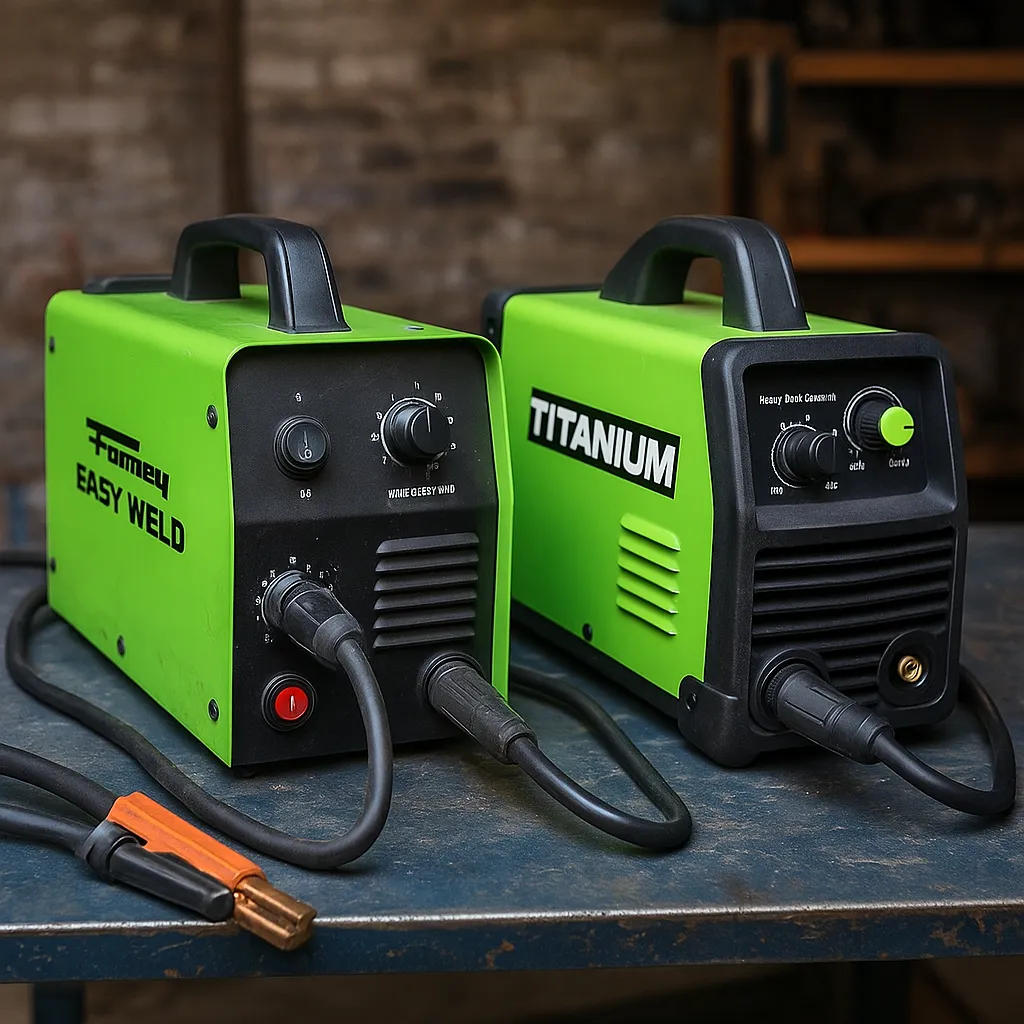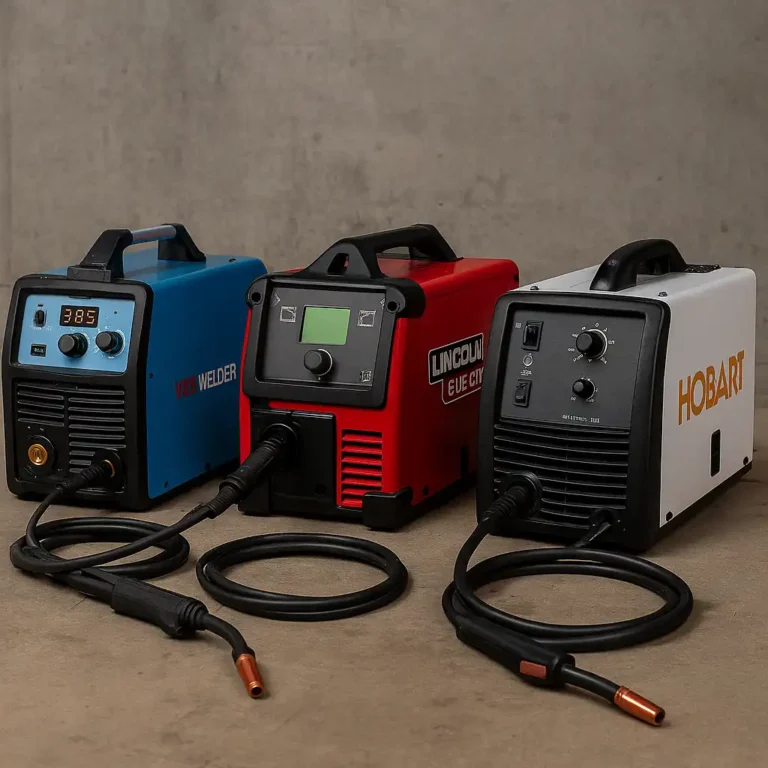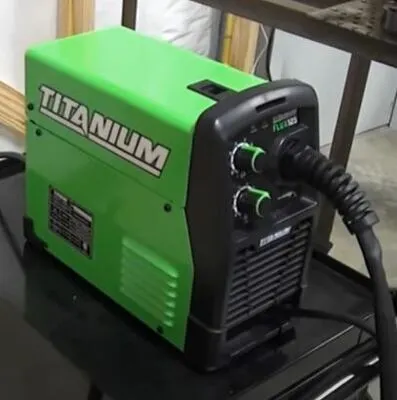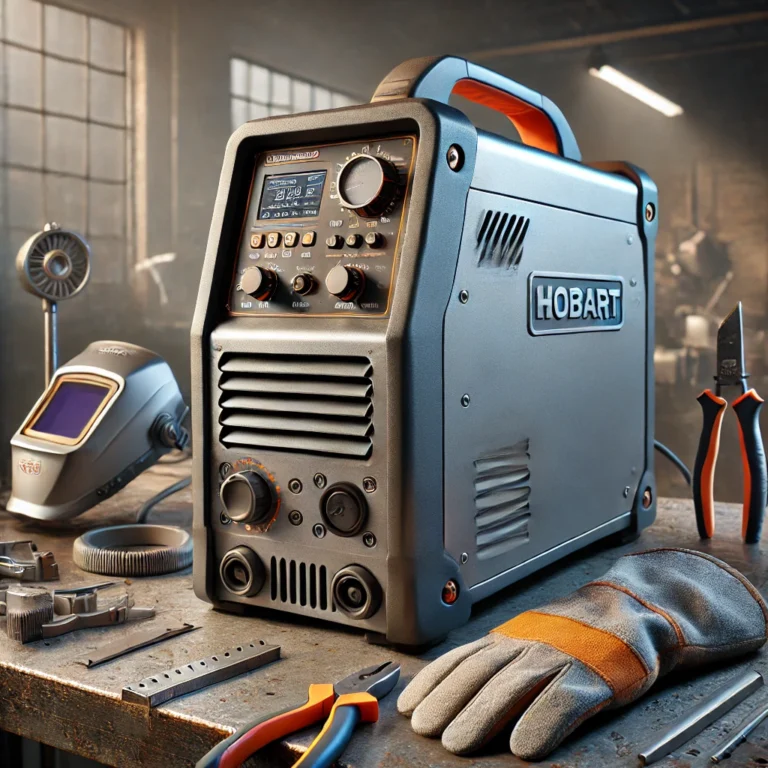Forney Easy Weld vs Titanium 125: Two Entry-Level Welders Worth Comparing

Disclosure: This post contains affiliate links. As an Amazon Associate, I earn from qualifying purchases—at no extra cost to you.
If you’re shopping for a beginner-friendly welder that runs on 120V and doesn’t require shielding gas, you’ve likely come across the Forney Easy Weld 140 FC-i and the Titanium Easy-Flux 125. These two machines are designed for light-duty work, perfect for small garage projects, quick repairs, and anyone learning the ropes of flux-core welding.
Both are affordable, portable, and highly rated—but which one gives you more bang for your buck? Here’s a head-to-head look at what real users are saying.
First Impressions and Build Quality
The Forney Easy Weld 140 feels like a solid, no-nonsense machine. It’s built with a rugged metal case and classic green styling. The layout is simple, and there’s a reputation for reliability, especially in home shop settings where gear sometimes gets knocked around.
On the other hand, the Titanium Easy-Flux 125 has a more compact design with a sleek black-and-green finish. It’s noticeably lighter and easier to stash away between jobs. Some users note the controls feel a bit more plastic, but overall, it holds up well for what it’s built to do.
If durability is your priority, Forney has the edge. But if portability is key, Titanium’s lighter frame is a big plus.
Arc Performance and Output Power
The Forney 140 offers a bit more muscle, with a 140A output that gives it better reach on thicker steel—up to 1/4 inch with proper prep and wire. Based on feedback from welding forums and verified buyers, the arc stays stable even at higher settings. It’s well-suited for tasks like trailer repair, fabrication, or working with mild structural steel.
The Titanium 125, with its 125A max output, is tuned more for sheet metal, light brackets, or smaller repairs. While it won’t handle thick steel as easily, many users say the arc is clean, and striking it is straightforward. For a welder under 30 pounds, it performs impressively well on lighter jobs.
Both machines use flux-core wire only, so they’re ideal for outdoor projects or areas where shielding gas isn’t practical.
Setup Simplicity and User Experience
If you’re new to welding, both of these machines make life easy.
The Forney uses basic knob controls for voltage and wire feed. There’s no screen, but it’s intuitive. Once you get a feel for your preferred settings, it becomes second nature.
The Titanium offers a similar two-dial setup and runs quietly, which a lot of beginners appreciate. According to user reviews, wire feeding is smooth, jams are rare, and it handles long beads without overheating—especially on short-duty cycles.
Both are ready to go out of the box and plug into a standard household outlet. That simplicity makes them great for weekend welders or folks learning on their own.
Portability and Practical Use Cases
Weighing about 25 pounds, the Titanium 125 is one of the more portable flux-core welders available. Its compact shape makes it easy to move around the garage or take on-site for quick fixes.
The Forney 140 is slightly heavier but still easy to carry. That extra size comes with more power, so if you’re planning to weld thicker metal or want something that can grow with your skills, it’s worth the extra few pounds.
Both machines work well for common garage and home welding projects, such as:
- Fence and gate repairs
- Utility trailer fixes
- Metal shelf builds
- Practicing fillet welds on mild steel
Check Price & Availability
Here are two of the best starter flux-core welders you can grab online:
View on Amazon – Forney 140 Amp Flux-Core Welder (120V, No Gas Needed)
View on Amazon – Titanium 125 Amp Flux-Core Welder (120V, Gasless Setup)
Conclusion
Both the Forney Easy Weld 140 and Titanium 125 are strong options for hobby welders, beginners, or anyone who needs a small, dependable machine for home use.
The Forney offers more amperage, a tougher build, and better performance on thicker materials. It’s a smart pick if you want a machine that can handle heavier projects without stepping up to a more expensive MIG setup.
The Titanium is lighter, easier to carry, and shines in smaller tasks. It’s ideal for light repairs, learning the basics, and getting quick, clean welds on thinner steel.
Either way, you’re getting a solid welder that won’t overwhelm you—or your budget.
Related Articles You Might Find Helpful
- MIG vs Flux Core Welding: Choosing the Right Process for Your Needs
- Best Flux Core Welder for Auto Body Repair: Precision Meets Power
- Vulcan Flux Core Wire Review: Affordable Welding Performance for DIY Projects
- What Flux Core Welding Is Used For—and Why It’s So Handy
- Best Flux Core Welder for Beginners
- Forney TIG Welder Reviews: Comparing 140 MP, 100ST, and 180 Stick Models






